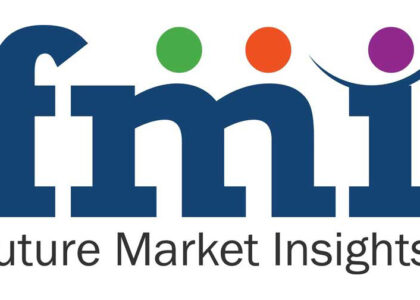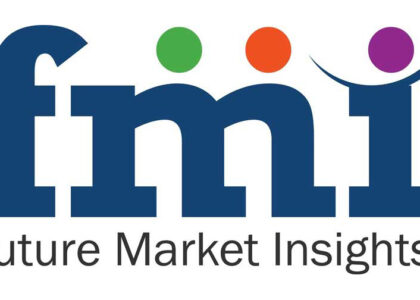Envisioned to reach a valuation of US$ 23.8 billion in 2023, the global intermediate bulk container (IBC) market is set for robust growth, with an anticipated Compound Annual Growth Rate (CAGR) of 6.9% from 2023 to 2033. Forecasts suggest that the overall sales of intermediate bulk containers will surge past US$ 46.2 billion by 2033. This trajectory underscores the increasing demand for efficient bulk packaging solutions across diverse industries. The IBC market’s continual expansion is driven by factors such as cost-effectiveness, ease of transportation, and the versatility of these containers in safely handling and transporting various liquids and bulk materials.
The burgeoning need for intermediate bulk containers (IBCs) across diverse sectors such as chemical, mining, pharmaceutical, food & beverages, agriculture, and more is set to propel market demand. A rapid surge in global intermediate bulk container industry is anticipated in the projected period (2023-2033) due to a surge in cross-border trade facilitated by lenient trade regulations.
Request Sample: https://www.futuremarketinsights.com/reports/sample/rep-gb-2036
Increasing import and export of essential commodities such as pharmaceuticals, food & beverages, fertilizers, and petroleum across the world and growing demand for safe and convenient bulk packaging solutions are the key factors driving the global intermediate bulk container (IBC) market forward.
Intermediate bulk containers have emerged as ideal packaging solutions for storing and transporting bulk solid, semi-solid, and liquid materials due to their safer, convenient, and cost-effective nature. Rising usage of these bulk packaging solutions across industries such as food & beverage, pharmaceutical, and chemical is expected to boost intermediate bulk container sales during the forecast period.
Numerous products are not exported or traded to different nations due to the unavailability of convenient and effective packaging types to transport them. Intermediate bulk containers (RBCs and FIBCs) are highly cost-effective packaging solutions, which ensure the product is shipped in its original form to its destination.
Prospecting untapped regions for exports of products will create an abundance of opportunities for the growth of the IBC market during the projection period. Regions such as Europe and North America are witnessing high demand for organic food products. Shipping of these organic products from various regions will require the use of bulk bags, thereby further strong-arming the market in these regions.
Factors such as ever-emerging cross-country trade, increased demand for modern containers to carry large liquid quantities, and reforming of rigid IBCs for reducing packaging scrap will exponentially increase intermediate bulk container sales globally.
FIBCs are the most suitable option for the export of food products. Flexible intermediate container (FIBC) bags are preferred over corrugated boxes, as they have a relatively high shelf-life and are also lightweight.
Key Takeaways from Intermediate Bulk Containers (IBC) Market
- By product type, the flexible IBC segment is likely to hold around 94% market share by the end of 2033.
- Based on material, plastic segment will continue to dominate the global intermediate bulk container (IBC) market during the next decade.
- In terms of content, solid & semi-solids segment is forecast to showcase an incremental opportunity of US$ 20.3 billion, during the assessment years.
- By end use, chemicals sub-segment in RIBCs category is estimated to create an incremental opportunity of US$ 1.2 billion during the projection period while food and agriculture sub-segment of FIBCs category is estimated to create an incremental opportunity of US$ 8.4 billion by the end of 2033.
- Europe is forecast to remain at the leading position and hold around 1/3rd share of the global market during the assessment period.
- With increasing manufacturing activities, East Asia and South Asia markets are estimated to witness a gain of 250 bps and 140 bps of current market share respectively by 2033.
- The U.S. intermediate bulk container (IBC) market reached US$ 3.5 billion in 2022 and it is expected to hold 7% share of North America market by 2033.
- China’s intermediate bulk container market is forecast to exhibit a CAGR of 5% between 2023 and 2033.
“Growing demand for flexible and rigid intermediate bulk containers due to their packaging capabilities in storing and transporting liquid, semi-solid and solid contents safely and conveniently is anticipated to provide a strong thrust to the global intermediate bulk container market development,” says an FMI analyst
Request Customization: https://www.futuremarketinsights.com/customization-available/rep-gb-2036
Market Drivers:
- Growing Demand in Various Industries:
- IBCs find applications in a wide range of industries, including chemicals, food and beverages, pharmaceuticals, and agriculture. The overall growth in these industries contributes to increased demand for IBCs.
- Cost-Effectiveness:
- IBCs are often considered cost-effective compared to other bulk packaging options. Their reusability and durability can lead to cost savings over time.
- Environmental Sustainability:
- With a rising focus on sustainability and environmental concerns, IBCs, which are often reusable and recyclable, are gaining popularity as an eco-friendly packaging solution.
- Global Trade and Logistics:
- The growth of global trade and logistics increases the demand for efficient and standardized bulk packaging solutions. IBCs provide a convenient and standardized way to transport and store liquids and granular materials.
- Advancements in Material Technology:
- Ongoing developments in material technology lead to the production of lighter yet durable IBCs, enhancing their overall performance and ease of handling.
Market Restraints:
- Regulatory Compliance:
- Stringent regulations regarding the transportation and storage of certain materials may impact the design and use of IBCs, leading to additional compliance costs.
- Limited Product Differentiation:
- The IBC market may face challenges related to limited product differentiation among manufacturers, leading to price competition. Companies need to focus on innovation and unique features to stand out in the market.
- Volatility in Raw Material Prices:
- Fluctuations in the prices of raw materials used in the manufacturing of IBCs, such as plastics or metals, can affect the overall production cost and profitability for manufacturers.
- Alternatives in the Packaging Industry:
- Competition from alternative packaging solutions, such as flexitanks or drums, may impact the market share of IBCs in certain applications.
- Limited Storage Space:
- The space required for storing empty IBCs can be a challenge for some industries, especially those with limited warehouse space.
Who is Winning?
- Grief Inc
- Thielmann US LLC
- Schafer Werke Gmbh
- Time Technoplast Ltd
- International Paper Company
- DS Smith Plc
- Mondi Plc
- SCHÜTZ GmbH & Co. KGaA
- Mauser Packaging Solutions
- Berry Global, Inc
- Hoover Ferguson Group
- Snyder Industries, Inc
- Bulk Lift International, Inc
- HCS Group
- Transtainer
- Obal Centrum s.r.o
- others
Flexible Intermediate Bulk Container Bags to Remain the Top Selling Product Category
Flexible intermediate bulk container bags are widely used by end-use industries due to their durability and lightweight properties. The target sub-segment is anticipated to hold about 93% of the market share by the end of 2023.
Western nations are largely emphasizing sustainable development and stringent rules for the environment are made, due to which procurement of raw materials will cause loss for several key players in these markets. But the FIBC bags are highly reusable and a sustainable option present in the market.
Buy Now/Purchase: https://www.futuremarketinsights.com/checkout/2036
Key Segmentations:
By Product:
- RIBC
- Metal
- Paperboard
- Plastic
- Composite
- FIBC
- Flexitanks
- Bags
By Material:
- Metal & Paperboard
- Plastic
- Polyethylene (PE)
- Polypropylene (PP)
- Polyvinyl Chloride (PVC)
By Content:
- Liquid
- Solid & Semi-Solids
By Capacity:
- RIBC
- Up to 1,000 L
- 1,000 – 1,500 L
- Above 1,500 L
- FIBC
- Up to 500 KG
- 501 to 1,000 KG
- 1,001 to 1,500 KG
- Above 1,500 KG
By End Use:
- RIBC
- Chemicals
- Petroleum & Lubricants
- Paints, Inks & Dyes
- Food & Beverage
- Cosmetic & Personal
- Healthcare & Pharmaceuticals
- Others
- FIBC
- Chemicals & Fertilizers
- Food & Agriculture
- Building & Construction
- Healthcare & Pharmaceuticals
- Mining
- Others
About Future Market Insights (FMI)
Future Market Insights, Inc. (ESOMAR certified, recipient of the Stevie Award, and a member of the Greater New York Chamber of Commerce) offers profound insights into the driving factors that are boosting demand in the market. FMI stands as the leading global provider of market intelligence, advisory services, consulting, and events for the Packaging, Food and Beverage, Consumer, Technology, Healthcare, Industrial, and Chemicals markets. With a vast team of over 5000 analysts worldwide, FMI provides global, regional, and local expertise on diverse domains and industry trends across more than 110 countries.
Contact Us:
Future Market Insights Inc.
Christiana Corporate, 200 Continental Drive,
Suite 401, Newark, Delaware – 19713, USA
T: +1-845-579-5705
For Sales Enquiries: sales@futuremarketinsights.com
Website: https://www.futuremarketinsights.com
LinkedIn| Twitter| Blogs | YouTube




